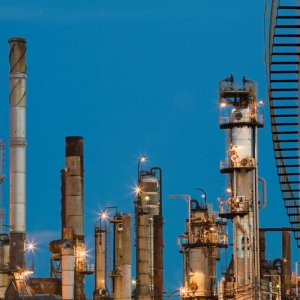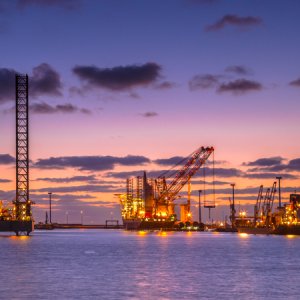Additives Set to Be a Key Differentiator

STORY INLINE POST
Q: As a chemical company, what interest does BASF have in the Mexican gasoline market?
A: As Mexico’s energy market opened, gasoline retailers from around the world saw an opportunity to establish their brands here. As a result, we are seeing transnational, regional and local companies opening gasoline dispatching stations, with their own branding and operations. We are also witnessing the emergence of national brands both by groups of gasoline station owners that create alliances to increase their competitiveness and retail companies that sell goods that are now diversifying their services to include the dispatch of gasoline. We have solutions for all gasoline retailers, and in a market like Mexico, where commercialized gasoline is the same, additives are set to become a core business differentiator.
Q: What is the unique added value BASF offers through its additives?
A: BASF offers the highest quality and top technologies. To do so, we rely heavily on R&D, 90 percent of which takes place in our German headquarters. But this does not mean that we are well-known to final users. As a matter of fact, companies prefer to commercialize their products with their own branding, and the same is true for our gasoline additives products. They prefer to have the additives they use related to their brand, so final users relate the benefits offered by the additive to the brand of the gasoline distributor. This is understandable considering the significant investments related to the development of an additive. BASF works together with the customer for three to four years prior to the launching of the additive on what is called a special package. This takes into consideration the performance improvements the customer is expecting from the additive when used with the gasoline, which is extensively tested at our facilities. The long-term investment means that BASF, together with the customer, looks at the long-term trends of the industry and how our special packages can offer the best added value for the customer.
Q: What main challenge did BASF Mexicana face when it started offering its additives in Mexico?
A: We began offering our additives in Mexico to one of the first transnational players that entered the Mexican market. This company already used BASF’s additives wherever in the world it has a presence. As such, the introduction of our additive to their Mexican gasoline dispatching activities was logical. The fact that the special package had been developed made the introduction much easier, but now we are facing a bigger challenge: logistics. As of January 2018, the additive and the gasoline must be mixed at the gas station. Although logistics to deliver additives to the gas station is not our core business, we are happily helping with this because we can see that by performing this activity we are not only able to sell our products but are actually helping the market mature. Also, the more products we deliver to gasoline retailers, the more prepared we will be to help any new company entering the market. With the advantage of offering our additives to many retailers from all over the world that are entering the Mexican market, having effective logistics for the gasoline additives here is going to be a strong asset.
Q: How savvy are gas consumers in Mexico and what needs to be done to ensure a successful industry?
A: We need to educate people in Mexico so they can understand and distinguish the differences between the types of gasolines offered by retailers. Consumers here are not used to having many options. In the past, there were only two types of gasolines, the green and the red, and the only difference between them was octane. In that previous environment, users did not have to worry about performance, availability or any external cost resulting from the use of either type of gasoline. For consumers to make more educated decisions they need to understand the pros and cons of each gasoline, and for them to understand these, the proper communication channels must be established. For many people, it was a big shock to see the first gasoline station without a PEMEX logo and with that, huge demand for different gasoline emerged. Beyond knowing the benefits of the gasoline, it was all about trying out something new. We need to turn that hype into an informed decision.
Another critical factor in reinforcing the presence and adoption of different gasolines and additives is the creation of a wide network of gasoline dispatching units that can offer a variety of products. In the case of big cities like Mexico City, this area is well-covered, but in some towns, drivers must travel up to 10km to reach the nearest station. The same is true for some roads and highways. The lack of gasoline distributors in those areas is a major opportunity and providing the proper education that shows the benefits of one or another gasoline or additive can make a big difference in the competition to attract more customers.
Finally, there is the regulation that forces us to only mix the gasoline with additives at the point of sale. This is not the best way to work if what we want is to incentivize customer preference for the inclusion of additives. In the long term, it is too expensive to supply the additives to each customer’s dispatching unit. The best way to go would be to have a facility where the products can be mixed and from there the final product dispatched to the point of sale. Although the gasoline distribution infrastructure does not allow for this option yet, there are companies already working on this. The more projects are developed in this area due to market demand, the faster regulation will be worked out to allow for it.
As we see it, it is just a matter of time for the infrastructure and the regulation to be up to the task of allowing additive and gasoline mixing in strategically placed storage units prior to distribution to the sale points. Working together with the pertinent channels, such as industrial associations, to ensure that regulation covers all the important elements of the products we create, not only in quality and performance but also in environmental and social aspects, is a top priority for us. This involvement does not only help the Mexican industry but also allows us to further widen our footprint in Mexico.
Q: Does BASF have plans to install production facilities for gasoline additives in Mexico?
A: Like any other global chemical company in the world, our facilities are located close to the raw materials we use and to the energy sources we require. At BASF, each of our facilities is also closely integrated with those surrounding it, in the sense that residue from one facility is working material for another, all together working with the objective of producing the best chemicals and keeping waste to a minimum. This is what we call at BASF the verbundt strategy. International logistics of the produced chemical is the chain connecting our product to the consumer. This is true for all our chemicals, including additives. With this in mind, and always keeping a global mentality wherein customers demand product across every continent, establishing an isolated plant is not cost-effective, and that is what would keep us from placing one in Mexico for gasoline additives at the moment. Our logistics service is efficient and robust, and we are up to any challenge that may come.
Q: How can BASF help retail companies introduce additives when they do not have the same experience as transnationals?
A: Gasoline dispatchers that do not have gasoline per se as their core business will have to find a way to differentiate their business model, in addition to providing a product that is popular with customers because of its comparable quality. These companies lack the necessary petrochemical knowledge to differentiate themselves. BASF can work with them to offer special packages that can bring their product up to standard.
























